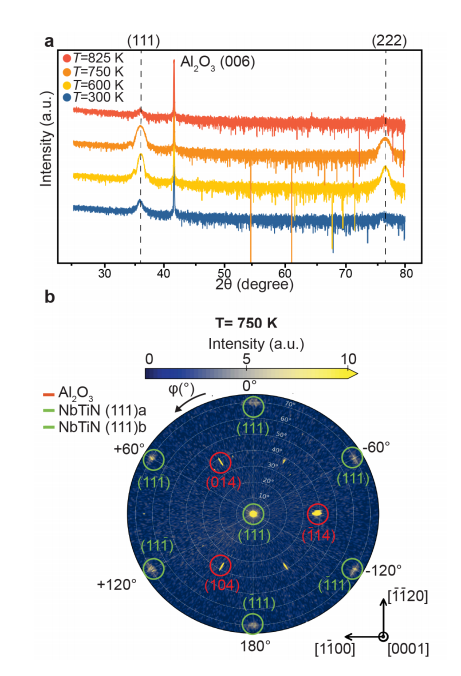
This paper discusses the development of a high-performance integrated single-photon detector using NbTiN thin films on lithium niobate-on-insulator (LNOI) substrates. It explores the optimization of NbTiN film quality via high-temperature growth techniques, which significantly enhance the superconducting properties of the films, making them suitable for single-photon detection.
Key points include:
High-Temperature Growth Optimization: The NbTiN films were grown using DC reactive magnetron sputtering at high substrate temperatures, with the best superconducting properties (critical temperature Tc of 12.3 K) achieved at 825 K. This temperature improved film quality, reducing oxidation and enhancing stoichiometry.
Material Properties and Interface Quality: The films exhibited a (111) crystal orientation, and the X-ray photoelectron spectroscopy (XPS) and scanning transmission electron microscopy (STEM) analyses showed that films grown at higher temperatures had better crystallinity and interface quality when integrated with LNOI, without any significant chemical intermixing.
SNSPD Fabrication and Performance: The integrated NbTiN films were used to fabricate superconducting nanowire single-photon detectors (SNSPDs). These detectors exhibited excellent performance, including high critical current density, fast response times, low dark counts, and high quantum efficiency, especially at cryogenic temperatures around 5 K.
Integration on LNOI: The study demonstrates that high-quality NbTiN films can be grown directly on LNOI substrates, paving the way for integrated quantum photonics applications. The integration of SNSPDs on LNOI platforms holds promise for scalable quantum computing and communication technologies.
In conclusion, this work provides a significant advancement in the development of integrated single-photon detectors, showcasing a key step toward fully integrated on-chip quantum photonics.
OMeda (Shanghai Omedasemi Co.,Ltd) was founded in 2021 by 3 doctors with more than 10 years of experience in nanpfabrication. It currently has 15 employees and has rich experience in nanofabrication (coating, lithography, etching, two-photon printing, bonding) and other processes. We support nanofabrication of 4/6/8-inch wafers.